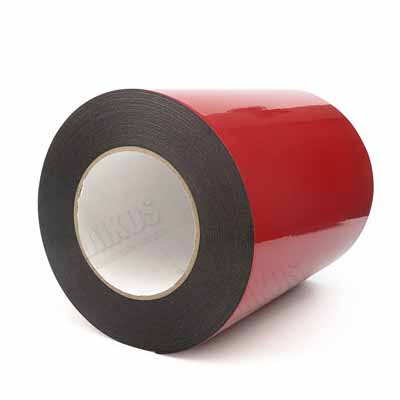Copper foil tape, also known as copper tape, has become increasingly popular in various industries due to its unique properties and versatility. This thin and electrically conductive adhesive tape is made from high-purity copper and is widely used in electronics, construction, automotive, and many other fields. In this article, we will delve into the basics of copper foil tape and explore its applications, properties, benefits, and challenges.
Copper foil tape has a wide range of applications across different industries. In the electronics industry, it is commonly used for shielding electromagnetic interference (EMI) and radio frequency interference (RFI) in electronic gadgets and devices. Copper tape serves as a barrier that blocks unwanted signals and protects sensitive electronic components from damage. In addition, it helps to ground the components and improve their overall performance.
Copper foil tape is also ideal for creating electrical circuits and repairing damaged wiring in vehicles, airplanes, and ships. It is a cost-effective solution that can be easily applied to any surface and withstand harsh environmental conditions. Moreover, copper tape is used in the construction industry for HVAC duct insulation, plumbing, and roofing. It provides a reliable and durable sealing solution that prevents leaks and enhances energy efficiency.
Copper foil tape is characterized by its unique physical and chemical properties. It is a thin, flexible, and easy-to-cut material that allows for precise application on various surfaces. This tape has excellent electrical conductivity and can carry low voltage and current loads without overheating. It is also resistant to corrosion, moisture, and temperature variations, which makes it suitable for high-performance applications.
Copper tape comes in different thicknesses, widths, lengths, and adhesive types to meet the specific needs of different industries. It can be coated with conductive or non-conductive adhesive, depending on the application requirements. Conductive adhesive tape provides a stronger bond and better electrical contact, while non-conductive adhesive tape is easier to remove and reposition.
Copper foil tape offers several benefits that make it a popular choice among users. First, it provides excellent shielding properties that protect electronic components from interfering signals and reduce electromagnetic radiation. This enhances the reliability, safety, and performance of electronic devices. Second, copper tape is easy to use and apply, which saves time and reduces labor costs. It can be easily cut, bent, folded, and molded to fit any surface or shape. Third, copper tape is a cost-effective solution that provides long-lasting and reliable performance. It can withstand harsh conditions and maintain its properties over time. Fourth, copper tape is eco-friendly and can be easily recycled, which reduces waste and promotes sustainability.
Despite its numerous benefits, copper foil tape also has some challenges that need to be addressed. One of the main challenges is its sensitivity to surface cleanliness and preparation. Copper tape requires a clean and dry surface to adhere properly and maintain its conductivity. Any dust, grease, or moisture on the surface can interfere with the bonding process and reduce the tape's effectiveness. Therefore, it is crucial to prepare the surface adequately before applying the tape.
Another challenge of copper tape is its fragility and susceptibility to damage. Copper is a soft metal that can scratch, tear, or puncture easily. Therefore, it is essential to handle the tape gently and avoid applying excessive force or pressure. Additionally, copper tape may corrode or oxidize over time if exposed to harsh environmental conditions, which can reduce its performance and lifespan. Therefore, it is advisable to choose a high-quality tape that is resistant to corrosion and moisture.
Copper foil tape is a versatile and reliable material that offers excellent shielding properties, electrical conductivity, and durability. It has a wide range of applications across various industries, including electronics, construction, and automotive. Its unique properties make it an attractive choice for designers, engineers, and manufacturers who seek high-performance and cost-effective solutions. However, copper tape requires proper surface preparation, handling, and storage to maintain its effectiveness and longevity. By following the best practices and choosing a high-quality tape, users can fully leverage the benefits of copper foil tape and enhance their products and processes.




